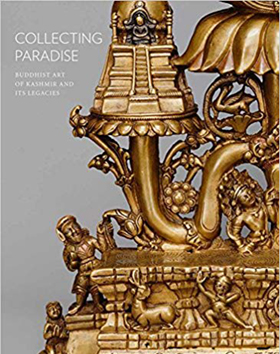Collecting Paradise: Buddhist Art of Kashmir and Its Legacies

Robert Linrothe
Serindia Publications
Hardcover | 2015 | $50.00 | ISBN 9781932476729 | 236 p.p. | 9.5 x 12 |
About the book
From the 7th to 11th centuries, Kashmir—a lush valley connected to the Silk Road—was a wealthy center of transcultural trade, culture and religion. Beginning in the 10th century, Buddhists in the Western Himalayas traveled to Kashmir to acquire, preserve and emulate its sophisticated art. Kashmiri artists also accepted invitations to travel to the Western Himalayas during this period to work with and teach local artists. The distinctive workmanship of the Kashmiri style became integrated into the identity of Tibetan Buddhism in this period and experienced a revival in the Western Himalayas in the 15th and 16th centuries. Centuries later, beginning in the 1900s, artworks from Kashmir and the Western Himalayas became prized acquisitions for collections in the U.S. and Europe. Western explorers, scholars and travelers removed these works -- often surreptitiously -- from their places of origin. Today many of these works reside in public and private collections. Collecting Paradise features Buddhist objects, including manuscripts, paintings, and sculptures in ivory, metal and wood, dating from the 7th to 17th centuries. With 44 objects, the exhibition presents an original and innovative look at art from the region of Kashmir and the Western Himalayas, as well as how it has been collected over time. The catalogue features essays by a leading scholar in the field, Robert Linrothe, associate professor of art history in Northwestern's Weinberg College of Arts and Sciences, with the support of Christian Luczanits, the David L. Snellgrove Senior Lecturer in Tibetan and Buddhist Art at The School of Oriental and African Studies (SOAS), University of London.